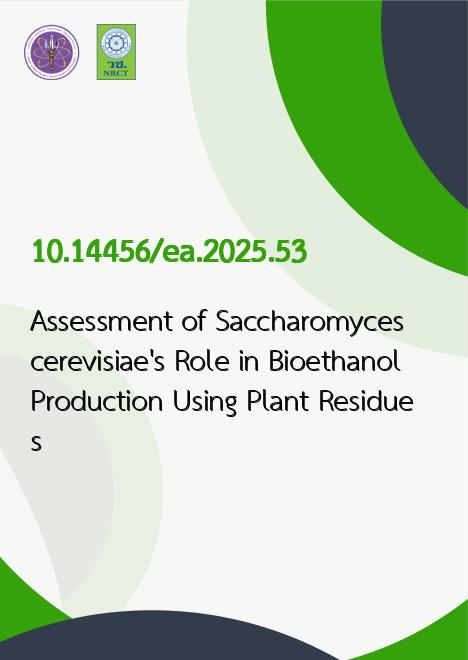
|
Assessment of Saccharomyces cerevisiae’s Role in Bioethanol Production Using Plant Residues |
|---|---|
| รหัสดีโอไอ | |
| Creator | Fadhil N. Al-Kanany |
| Title | Assessment of Saccharomyces cerevisiae’s Role in Bioethanol Production Using Plant Residues |
| Contributor | Mazin A. Beden, Fadhil N. Al-Kanany, Asaad M.R. Al-Taee, Hassan Al Shawi |
| Publisher | Thai Society of Higher Education Institutes on Environment |
| Publication Year | 2568 |
| Journal Title | EnvironmentAsia |
| Journal Vol. | 18 |
| Journal No. | 3 |
| Page no. | 89-97 |
| Keyword | Bioethanol, Saccharomyces cerevisiae, Plant residues, pH, Temperature |
| URL Website | http://www.tshe.org/ea/index.html |
| Website title | EnvironmentAsia |
| ISSN | 1906-1714 |
| Abstract | The global shift towards sustainable energy sources has intensified the seek for renewable substitutes to fossil energies. Bioethanol, produced through the fermentation of biomass, arise as a hopeful solve. The current study examines the role of Saccharomyces cerevisiae in fermenting agricultural residues specifically yellow corn, soybean, rice straw, wheat straw, and barley straw for bioethanol production. The effects of pH (5, 5.5, 6, and 7), temperature (20 0C, 25 0C, and 30 0C), and incubation time (2, 3, 4, and 8 days) on fermentation efficiency were assessed, using a yeast to substrate ratio of 1:2, Our results demonstrated that the optimal conditions for bioethanol production are pH 7, a temperature of 30 °C, and an incubation period of 2 days, yielding a maximum concentration of 12.36 g/L and a production rate of 6.18 g/L-day. These findings highlight the potential of S. cerevisiae to convert various plant residues into bioethanol efficiently. The the current study underscores the significance of optimizing fermentation conditions to promote bioethanol yields, participating to the progress of cost-effective biofuel production approaches. Future studies should explore the economic viability of scaling up this process and explore the fermentation of further agricultural residues to additional diversify feedstock resources for bioethanol production. |